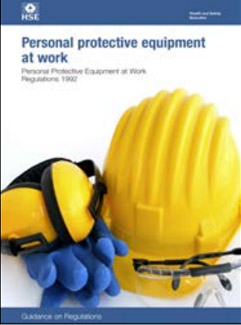 |
|
|
|
Publication Of Consultation Response On Amendments To The Personal Protective Equipment At Work Regulations 1992 Changes are being made to the PPER 1992 to align with a court judgment which decided that the Government had failed to adequately transpose Article 8(4) and 8(5) of EU Directive 89/391/EEC (“the Framework Directive”) and Article 3 of EU Directive 89/656/EEC of 30 November 1989 (“the Personal Protective Equipment Directive”) into UK law. The employer’s duties include the assessment and provision of PPE (where it is found necessary during a risk assessment), ensuring PPE is suitable for use, the maintenance and replacement of PPE, and other duties around the information, instruction, training, and use of PPE. The employee’s duties under the PPER 1992 are to report loss and defects in the PPE which they are provided, use the PPE in accordance with the training and instruction provided, and to ensure PPE is returned to the accommodation provided by the employer. The aim of the consultation is to understand the impact (costs and benefits) on stakeholders and businesses of extending the scope of the employers’ and employees’ duties under the PPER to limb (b) workers. HSE currently plan to introduce the amending regulations in early 2022 and expect the regulations to come into force on 6 April 2022. They will also publish updated guidance to support businesses that are impacted by the changes and ensure workers are aware of their rights in respect of PPE in the workplace. There are two main employment statuses for employment rights: ‘employee’ and ‘worker’. Employees are defined as limb (a) and workers are defined as limb (b) in the Employment Rights Act 1996 s.230: ..an individual who has entered into or works under– (a) a contract of employment; or (b) any other contract, whether express or implied and (if it is express) whether oral or in writing, whereby the individual undertakes to do or perform personally any work or services for another party to the contract whose status is not by virtue of the contract that of a client or customer or any profession or business undertaking carried on by the individual. Generally, limb (b) workers:
Source: HSE
|

